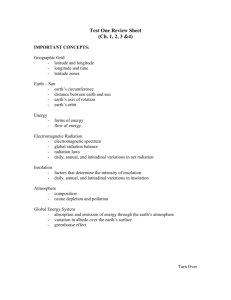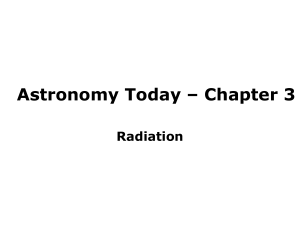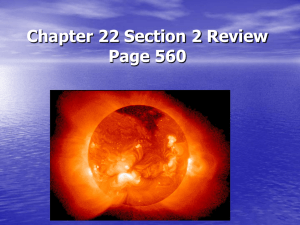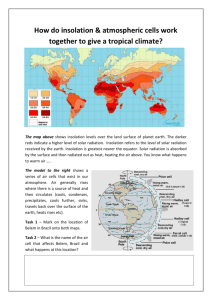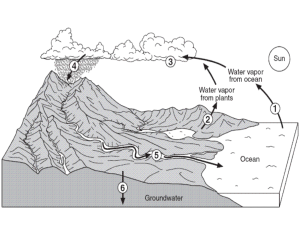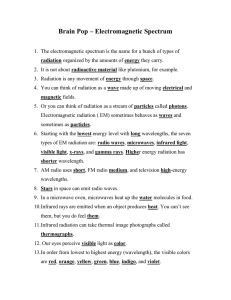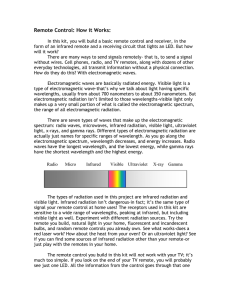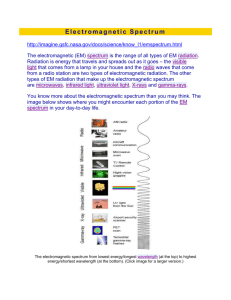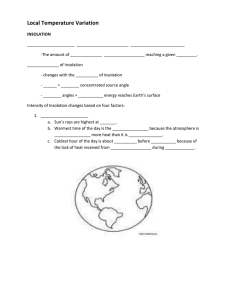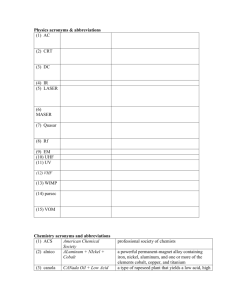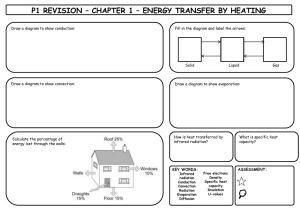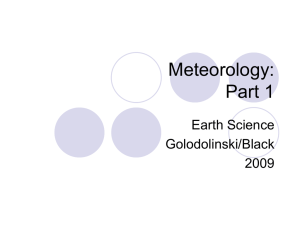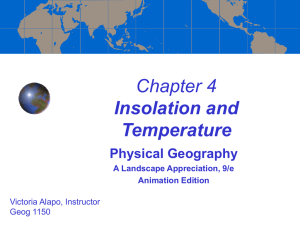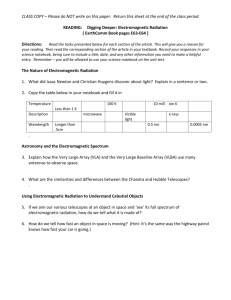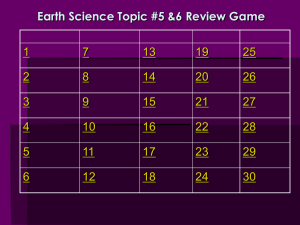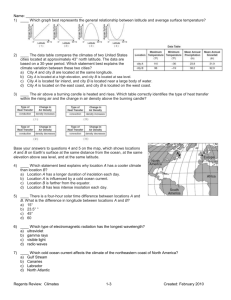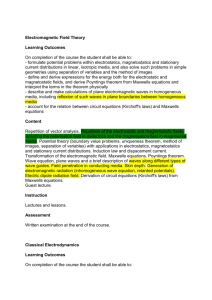Answers to Assignment #4
advertisement
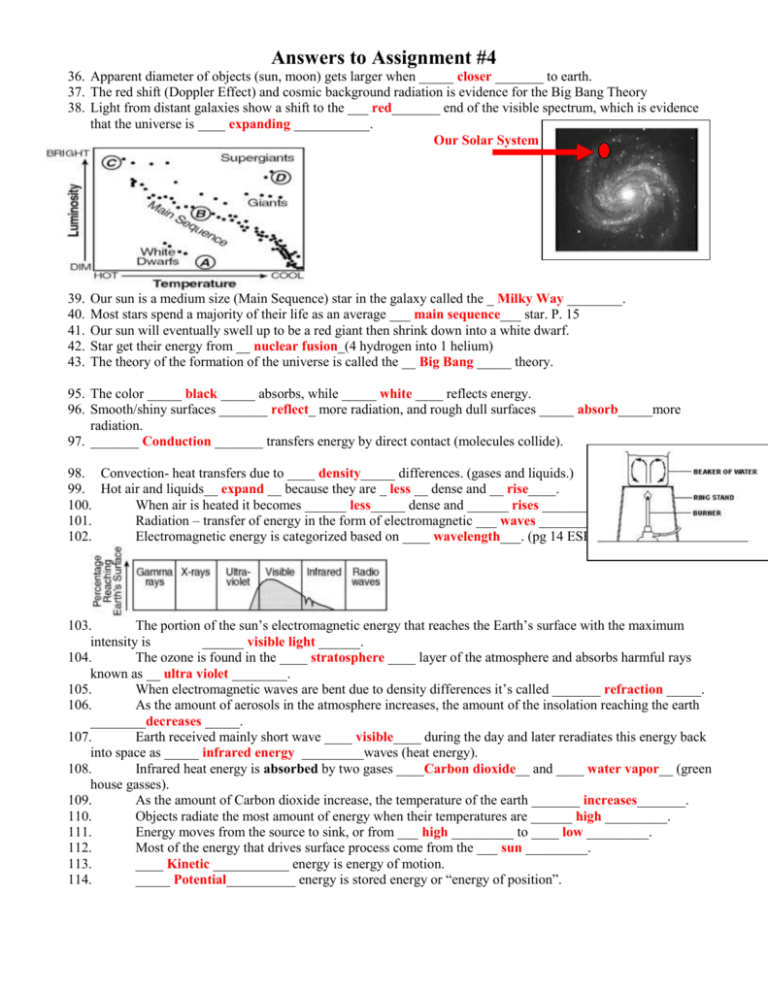
Answers to Assignment #4 36. Apparent diameter of objects (sun, moon) gets larger when _____ closer _______ to earth. 37. The red shift (Doppler Effect) and cosmic background radiation is evidence for the Big Bang Theory 38. Light from distant galaxies show a shift to the ___ red_______ end of the visible spectrum, which is evidence that the universe is ____ expanding ___________. Our Solar System 39. 40. 41. 42. 43. Our sun is a medium size (Main Sequence) star in the galaxy called the _ Milky Way ________. Most stars spend a majority of their life as an average ___ main sequence___ star. P. 15 Our sun will eventually swell up to be a red giant then shrink down into a white dwarf. Star get their energy from __ nuclear fusion_(4 hydrogen into 1 helium) The theory of the formation of the universe is called the __ Big Bang _____ theory. 95. The color _____ black _____ absorbs, while _____ white ____ reflects energy. 96. Smooth/shiny surfaces _______ reflect_ more radiation, and rough dull surfaces _____ absorb_____more radiation. 97. _______ Conduction _______ transfers energy by direct contact (molecules collide). 98. Convection- heat transfers due to ____ density_____ differences. (gases and liquids.) 99. Hot air and liquids__ expand __ because they are _ less __ dense and __ rise____. 100. When air is heated it becomes ______ less_____ dense and ______ rises _______. 101. Radiation – transfer of energy in the form of electromagnetic ___ waves __________. 102. Electromagnetic energy is categorized based on ____ wavelength___. (pg 14 ESRT) 103. The portion of the sun’s electromagnetic energy that reaches the Earth’s surface with the maximum intensity is ______ visible light ______. 104. The ozone is found in the ____ stratosphere ____ layer of the atmosphere and absorbs harmful rays known as __ ultra violet ________. 105. When electromagnetic waves are bent due to density differences it’s called _______ refraction _____. 106. As the amount of aerosols in the atmosphere increases, the amount of the insolation reaching the earth ________decreases _____. 107. Earth received mainly short wave ____ visible____ during the day and later reradiates this energy back into space as _____ infrared energy _________waves (heat energy). 108. Infrared heat energy is absorbed by two gases ____Carbon dioxide__ and ____ water vapor__ (green house gasses). 109. As the amount of Carbon dioxide increase, the temperature of the earth _______ increases_______. 110. Objects radiate the most amount of energy when their temperatures are ______ high _________. 111. Energy moves from the source to sink, or from ___ high _________ to ____ low _________. 112. Most of the energy that drives surface process come from the ___ sun _________. 113. ____ Kinetic ___________ energy is energy of motion. 114. _____ Potential__________ energy is stored energy or “energy of position”. 115. There is NO ____ temperature_____ change during a phase change. 116. 117. 118. 119. 120. 121. (6/21) Use the ESRT to see which process release energy and which processes gain energy (front page.) ____Infrared ______________ is heat energy that is re-radiated by the earth. Land heats up __ quicker _______ than liquid water because it has a __ lower ________ specific heat. The higher the specific heat the ____ slower __________ it takes to heat up and cool down. Good absorbers of radiation are also good _____ radiators __________________. The hottest time of the year is ___ July __________(approx date), which is after the angle of insolation Hottest part of the day is ____ 2-3 o’clock_____(approx time) which is after the greatest angle of insolation (noon). 122. 163. The rate of evaporation increases when surface area _______ increases ___________. 164. As particle size increases, permeability __________ increases ________. 165. Porosity (percentage of empty pore spaces) does not depend on _______ particle size ________. 166. ____________ Smallest______ particles retain the most water after infiltration. 167. As the slope of the land increases, runoff _______ increases________. 168. Runoff ___________ increases _______ when a surface is impermeable, saturated, steeply sloped. 169. In order for infiltration to occur the ground needs to be ________ unsaturated ____ and _______ permeable ______. 170. If the rate of precipitation is greater than the rate of infiltration, _______ runoff ______ will occur. 171. Capillarity (movement of water upward against gravity) increases when particle size __________ decreases____. 172. Transpiration- process by which living plants release water vapor to atmosphere. 173. The amount of Ep (potential evapotranspiration) depends on _____ temperature _________. 174. Large bodies of water _______ moderates________ temperatures. 175. During the day there is a _______ sea ______ breeze. At night a ________ land ____ breeze develops. 176. Continental climates = ____ large ___ temperature range. Cooler____ winters______ and warmer __ summers___. 177. Marine climates = _____ small ____ temperature range. Cooler ______summers and warmer ____ winters____. 178. The windward side of a mountain is ____ cool ______ and ____ wet ___. The leeward side is ____ warm _____ and ______ dry _____. (Label the diagram, what happens to the air as it rises and sinks on Air rises, expands, cools Air sinks, compresses, and warms either side of the mountain?) 179. Ocean currents are caused by _____ wind______., and are deflected due to the ___Coriolis Effect____ 180. As latitude increases, temperature _______ decreases __________. 181. As elevation increases, temperature ______ decreases ____________.
